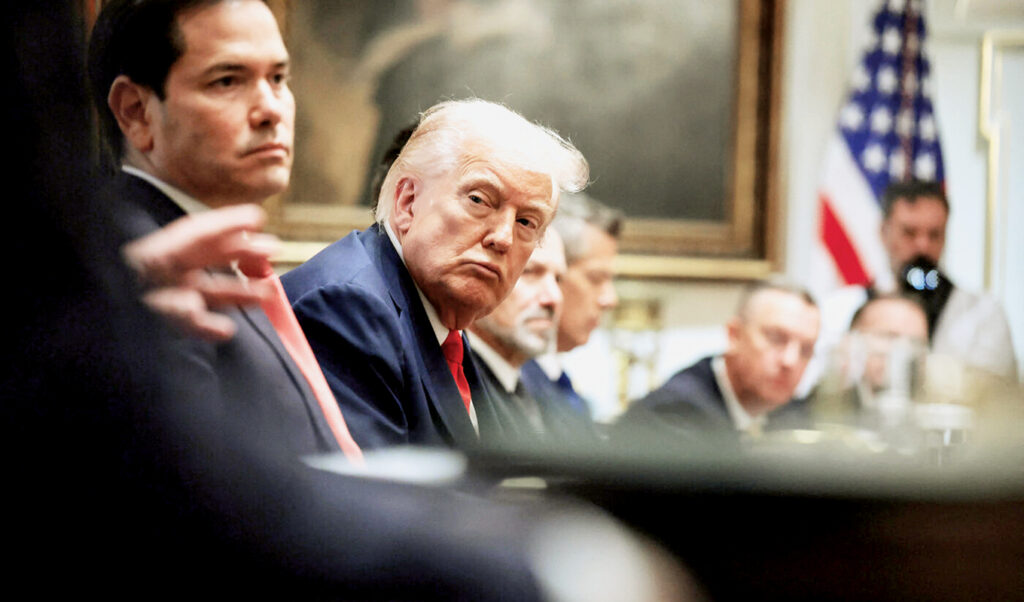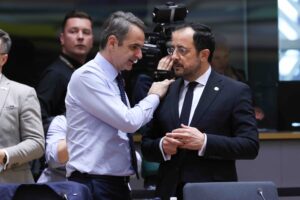Donald Trump triumphantly confirms his role as peacemaker, with the American president announcing in the early hours of Thursday (Greek time), after a 240-hour sequence, that Israel and Hamas have reached an agreement on the first phase of his plan for a ceasefire and exchange of hostages and Palestinian prisoners.
Given that this agreement will be upheld and the rapid developments that followed the Trump-Netanyahu meeting at the White House on September 29 will indeed shape a new landscape in the devastated enclave, Israel may feel it has achieved its objectives, maintaining de facto control over key points in Gaza, with interest now turning to more “thorny” issues (Hamas disarmament, post-war Gaza administration, withdrawal of Israeli armed forces to allow deployment of an International Stabilization Force, etc.).
In Israel’s Cabinet, objections are being expressed regarding the peace plan, demanding the complete “destruction” of Hamas, while on the other hand, no Palestinian “will accept disarmament”
OFFICIALLY
The American president, who aspires for his Gaza-centered plan to shape a new “day” for the Middle East (always with the backdrop of the “Abraham Accords,” which were also analyzed in “P”), will have the opportunity to personally celebrate the agreement for “ending” the Gaza war, which could bring “lasting peace” and “miracles” to the enclave, while the agreement will also be signed “officially” in Egypt (after the initial agreement between the involved parties), as he announced Thursday afternoon at the Cabinet meeting in Washington.
It should be noted that before the Cabinet meeting in the US, the Israeli presidency office announced that Donald Trump will be in Jerusalem (he will also address the Israeli Parliament, the Knesset). A related invitation to the American president to visit Egypt to attend the agreement signing ceremony was also extended by Abdel Fattah al-Sisi.
Regarding what will happen in Gaza, Netanyahu government spokesperson Shos Bentrosian announced Thursday that after completing the hostage release, Israeli armed forces will continue to control and maintain presence in 53% of the Gaza Strip. It should be recalled that in Sharm el-Sheikh, Egypt, Israel and Hamas agreed, in indirect talks, that the 48 hostages held by militants in Gaza (with 20 of them estimated to be alive) will be released in exchange for approximately 2,000 Palestinians held (250 organization members sentenced to life imprisonment and 1,700 Palestinians from the Gaza Strip) in Israeli prisons.
Meanwhile, humanitarian aid to the enclave will increase, with hundreds of trucks ready to enter Gaza and Tom Fletcher, UN head of humanitarian affairs, stating that officials have 170,000 tons of aid ready with medicines and other supplies for the enclave. Thursday was particularly “dense,” with the issue of the final list of Palestinian prisoners drawing interest (note: the Israeli government spokesperson clarified that Marwan Barghouti, a senior Fatah leader serving five life sentences plus 40 years for attacks that caused Israeli deaths, will not be included in this list), while Israel also blocked the return of bodies of specific Hamas leadership figures, such as the Sinwar brothers, Yahya (considered the “mastermind” of the October 7 attack) and Mohammed (the organization’s shadowy military leader).
Now, major interest turns to negotiations expected to begin for advancing the next phases of Donald Trump’s peace plan. The issue of peacekeeping forces is crucial, with Italy, through Foreign Minister Antonio Tajani, having already expressed willingness to send peacekeeping forces to Gaza if needed. Emmanuel Macron expressed similar willingness during a ministerial meeting of European and Arab countries hosted in Paris on Thursday.
“UNRESOLVED” ISSUES
The fact that the first stage of the agreement was concluded doesn’t mean negotiations will be easy (the American president said this too, noting that many issues remain “unresolved” regarding later phases of the agreement). Work on next steps, together with Egypt, Qatar, and Turkey, was also mentioned in the statement by Hamas leader Khalil al-Hayya, who announced the “end of war,” the start of “permanent ceasefire,” along with security guarantees from the US, Arab mediators, and Turkey.
However, as senior organization official Osama Hamdan said from Egypt, no Palestinian “will accept disarmament,” as “weapons and resistance” are required, indicating the difficulties ahead, while it doesn’t seem certain that the technocratic committee that will assume enclave administration -based on Trump’s plan- and will be supervised by a new international transitional body, the Peace Council, headed by the American president himself with Tony Blair present, will be accepted.
Similar and permanent difficulties exist in Israel’s Cabinet (which of course approved the plan after a marathon session that ended in the early morning hours of Friday), with far-right ministers expressing objections to the peace plan, demanding complete “destruction” of Hamas, while specific positions were expressed on the issue of which Palestinians would be exchanged for hostages.
It was also not coincidental that Israeli Internal Security Minister Itamar Ben-Gvir visited, while negotiations were in full swing, the area of the Al-Aqsa Mosque compound in Jerusalem, one of Islam’s holiest sites, stating that “we are the owners of the Temple Mount.”
Published in Parapolitika newspaper




